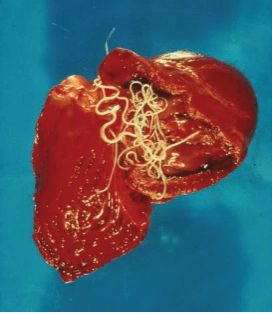CHAPTER FIVE
Worms in dogs and cats that can get into people
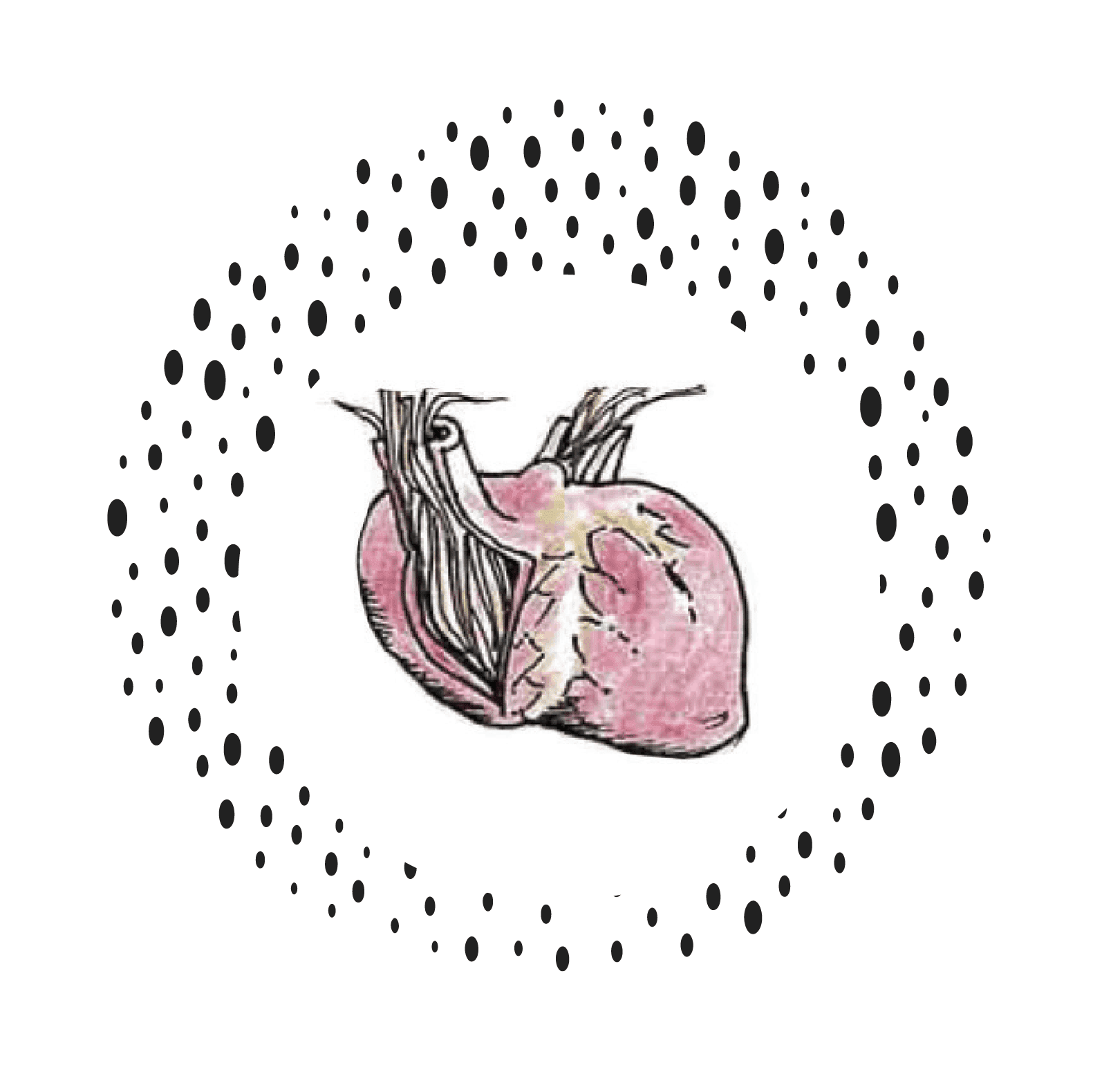
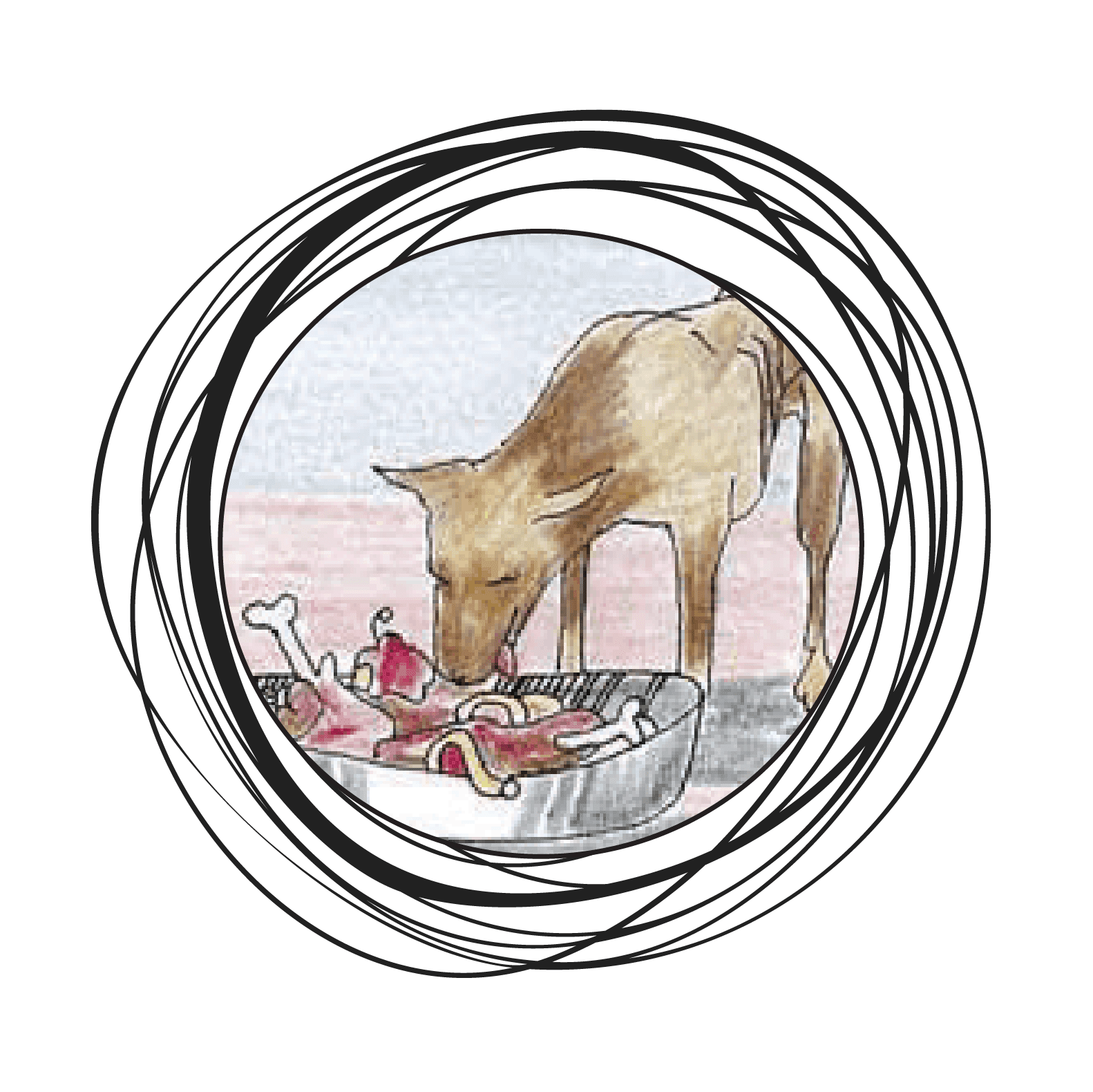
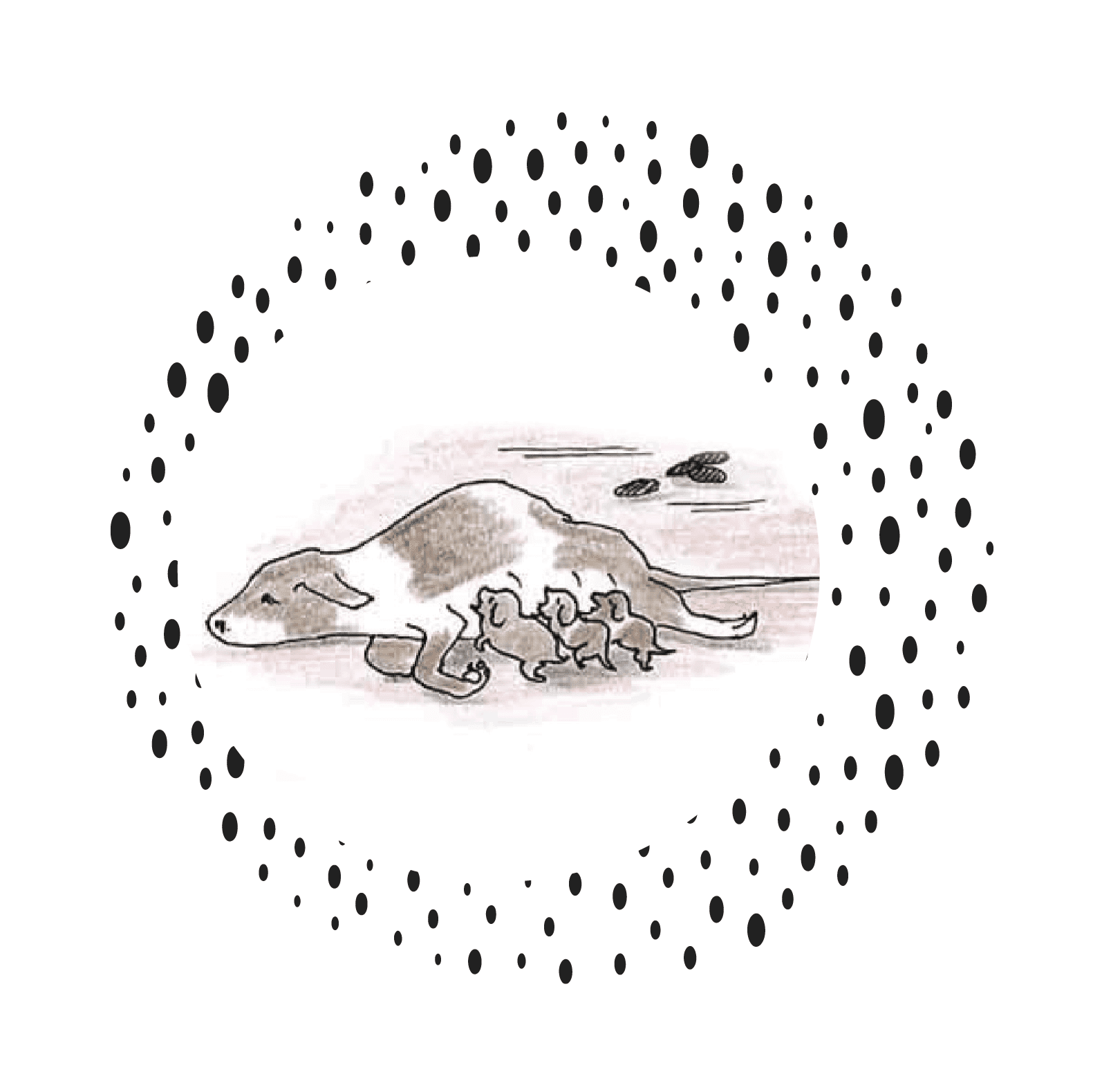
Worms in dogs and cats that can get into people
This chapter talks about worms that can pass from animals to people.
Some of the worms can cause big health problems in animals or people; some of them only occasionally cause health problems in animals or people.
There are lots of things that you, as the EHP, can do to prevent and treat these worms, but it’s important to first understand how these worms breed and spread.
In this chapter, you will learn how these worms can breed and infect animals and people, and how they can make animals and people sick.
Then, in Chapter 7, you can find information about things that you and pet owners can do to prevent and treat worms, so that you are keeping both animals and people healthy.
Roundworm life cycle
Roundworm eggs pass with faeces and can survive for months in the soil.
In yards where lots of pups or kittens are born there can be lots of roundworm eggs in the environment.
The eggs are very small. They can only be seen with a microscope.
Roundworm eggs do not live in the environment if the temperature is above 37oC.
Roundworm eggs need at least 7 days on the ground before they can infect people or animals.
Puppies and kittens can have large numbers of roundworm in their gut even when they are very small.
They can get infected with roundworm from their mothers when they are still inside her. This means that pups and kittens can be born with the roundworm already in their guts.
Pups and kittens can also get roundworm larvae from their mother’s milk straight after they are born.
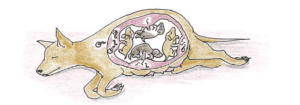
Do roundworms make dogs and cats sick?
Roundworms are the biggest type of worm in the guts of a dog or cat.
They do not usually cause a problem for adult dogs or cats, but they are often a big problem for puppies or kittens.
If puppies or kittens have a lot of these worms, their gut can get fully blocked. When this happens, pups and kittens can get very sick and die.
Signs of roundworm infection are skinny puppies and kittens with pot bellies and dull coats.
{insert video clip ‘20190325 Campbell Springs cyclone happy pups.mp4’. Caption: See how these puppies are skinny, have dull coats and pot bellies? They probably have roundworms. Photo courtesy Jan Allen/AMRRIC}
When a puppy or kitten is wormed for the first time the owner may find a large number of roundworms in the faeces. They are usually long and cream or yellow colour.
Do roundworms from dogs or cats make people sick?
Many people’s bodies make antibodies to dog and cat roundworms. Their body’s immune system can then fight the worms off without them getting sick.
People with a weak immune system, like babies and children, are most at risk of getting sick from dog or cat roundworms.
If children or babies eat some dirt with roundworm eggs in it, the eggs hatch in their guts. The worm larvae then move through the gut wall and into the person’s lung. From the lungs, they are picked up by the blood and moved around the body.
The worms can get stuck in places around the body. They can form a cyst where they get stuck.
If they get stuck in the eye they can make a person blind. If they get stuck in the brain or other important organs, they can make a person very sick.
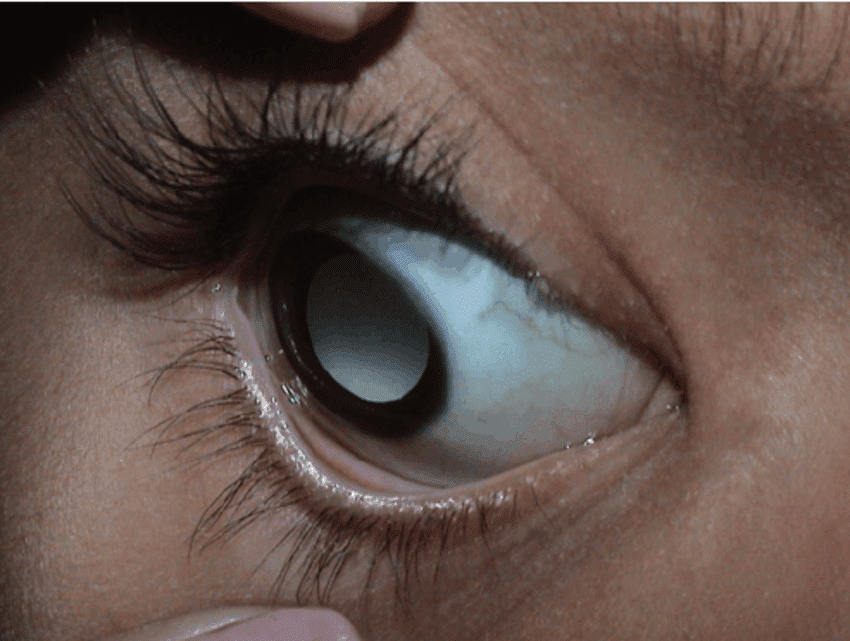
Eye problems caused by a roundworm larva that has gotten stuck in the eye. Image courtesy: Leukocoria and the red reflex test – Scientific Figure on ResearchGate. Available from: https://www.researchgate.net/figure/Endophtalmitis-caused-by-ocular-toxocariasis_fig4_26851543 [Accessed 25th November 2019].
Hookworms
There are different types of hookworm that dogs and cats can carry. These include Ancylostoma caninum and Anyclostoma ceylanicum and Ancylostoma braziliense.
Hookworms are more common in areas with a tropical climate.
Hookworms from dogs and cats can cause sickness in both animals and people.
Did you know?
Humans also have their own type of hookworm – Anyclostoma duodenale.
The human hookworm sometimes causes people, especially children, to have weak blood.
Worming the dogs and cats in a community will not stop the spread of the human hookworm, but it can stop pets sharing hookworm with people.
Hookworm life cycle
Hookworms live in the gut and bite the dog’s or cat’s gut wall to feed on their blood.
After breeding, the female worms lay eggs that pass in the dog’s or cat’s faeces.
These eggs hatch on the ground and turn into small larvae.
The larvae can survive a long time in the environment. They can live in the soil for months when it is shady, cool and moist.
The larvae then move into the dog or cat by:
-
- moving from the soil, though the animal’s skin
- the dog or cat eating some contaminated dirt
Some larvae will also move into pups and kittens from the mother’s milk.

Do hookworms make dogs and cats sick?
Yes. Hookworms can be a big problem, especially for puppies and kittens in the tropics.
Without regular worming medicine, hookworm can make dogs and cats sick in three ways:
1. Pups and kittens dying through bleeding from the gut
The pups and kittens get hookworm from their mum’s milk. By the time they are 10 days old, they can have lots of worms feeding on their blood.
The worms have very sharp teeth. They bite onto the gut wall and suck the blood.
When there are lots of worms, they can drink lots and lots of blood.
These pups and kittens become very weak. They have white gums because there is not enough blood in their body.
They usually have bloody diarrhoea.
Pups and kittens can die from the blood loss caused by hookworms.
If lots of pups and kittens are dying before they are 6 weeks old, as the EHP, you can to work with the vet to decide if hookworm is the cause.
2. Weak blood (anaemia)
This happens when the dog or cat slowly loses blood from the worms in its gut.
When worms are causing anaemia, there are usually not enough worms to kill the animal. But because of the anaemia, these dogs and cats are skinny and have no energy.
Anaemia is mostly seen in dogs and cats that are not fed well.
3. Skin rashes
The main way hookworm larvae get into dogs and cats is through the skin.
If there are lots of hookworm larvae in a yard the dogs and cats will have lots of larvae moving into their skin when they lie down on the dirt.
The larvae moving through the skin causes itchy rashes. The dogs and cats chew the areas and make sores.
Do hookworms from dogs and cats make people sick?
Remember, humans have their own type of hookworm, but hookworm from dogs and cats can also make people sick.
People get infected with dog or cat hookworm when the larvae move from the soil through their skin. This can cause itchy red tracks in the skin where the larvae have been. These tracks are called ‘cutaneous larval migrans’.
Sometimes, hookworm from dogs and cats can also cause a condition called ‘eosinophilic enteritis’ which causes people to have bad gut aches.
Even though there can be lots of dog and cat hookworm in communities, most cases of human sickness from these hookworms are seen in non-Indigenous people, not Aboriginal or Torres Strait Islander peoples.
This might be because Aboriginal or Torres Strait Islander children get dog or cat hookworm larvae from the soil when they are very young. Once they have had a few larvae go through their skin, their immune system will make antibodies to the dog or cat hookworm. This immunity will then help to stop the dog or cat hookworm before it gets too bad.
Flea tapeworm
The flea tapeworm, Dipylidium caninum, is the most common dog and cat worm that may be noticed by people.
Flea tapeworm life cycle
Small pieces of the worm break off from the parent worm inside the dog.
These pieces move on to the outside of the dog’s anus or pass with faeces. The worm pieces are flat and white. People can sometimes see these pieces of worm wriggling around.
The pieces of tapeworm have lots of tapeworm eggs in them.
The piece breaks open and the eggs go into the soil or bedding.
Flea larvae and lice in the soil or bedding eat the tapeworm eggs.
The fleas and lice then have these tapeworms eggs inside them.
When a dog or cat chews fleas or lice, they can swallow the tapeworm egg (which is still inside the flea or lice).
The tapeworm egg hatches in the dog’s or cat’s gut and grows into an adult tapeworm.
Then the whole cycle starts again.
Do flea tapeworms make dogs and cats sick?
Not usually.
Dogs and cats can lose weight if they have lots of tapeworms, but this is quite rare.
Sometimes, tapeworms can cause dogs and cats to scoot (drag their bottom along the ground).
Do flea tapeworms make people sick?
People can get the flea tapeworm, but this is not common. It does not usually make people sick.
Occasionally, the worm may make children feel a bit sick in their stomachs or make them feel like not eating their food.
Hydatid tapeworm
Hydatid tapeworms are called Echinococus granulosus.
Dogs and dingoes get hydatid tapeworms when they eat offal from animals with hydatid cysts.
The cysts are mostly in sheep, but can also be in wallabies, kangaroos, cattle, pigs and goats.
Hydatid tapeworms do not affect cats.
Hydatid tapeworms are mostly found around sheep farms in cooler wet areas in southern states like Victoria and Tasmania.
Hydatid tapeworms do not usually live in dogs in the Top End. But there is always the risk that the worm will go to the Top End with a dog or with travelling cattle or sheep.
Hydatid tapeworms do not cause health problems for dogs, but when eggs passed by dogs infect humans or other animals, they can cause serious health problems.
Hydatid tapeworm life cycle
The hydatid tapeworm is about half a centimetre long and lives in the gut of dogs or dingoes.
Every two weeks the end of the worm breaks off and moves into the dog’s or dingo’s faeces. This end part of the worm is tiny (it can only be seen with a microscope), and full of eggs.
The eggs move into the dirt. They can be spread by the wind and can survive for months in water.
From the soil, the eggs can be eaten by sheep or other grazing animals like wallabies, kangaroos, cattle, pigs and goats. People can also accidently eat the eggs in contaminated plants or soil.
Once eaten by an animal or person, the egg moves though the gut and into the blood.
The egg then gets stuck in different part of the body and forms a cyst where thousands of baby hydatid worms can grow.
These cysts can grow very big. They are mostly found on the liver but they can be in any organ or muscle in the animal or person.
In animals, the cysts are sometimes found when the animal is killed and the carcass is butchered. If the cyst is in muscle then the meat can’t be sold, so the carcass might have to be wasted. Because of this, hydatid cysts can cause big economic losses.
Dogs and dingoes can only get the tapeworm from eating a hydatid cyst in the offal or muscle of a wallaby or kangaroo, sheep, cattle, goat or pig. They cannot catch the worm from other dogs.
People cannot get the cyst from eating or touching the cysts in wallaby or kangaroo, sheep, cattle, goat or pig. People can only get hydatid cysts from eating the hydatid tapeworm egg in soil or plants that have been contaminated by dog or dingo faeces.
Do hydatid tapeworms make dogs and cats sick?
Not usually. The worms live in the dog’s gut but do not usually cause big problems. If a dog has lots of hydatid tapeworms they may get diarrhoea.
Cats cannot get hydatid tapeworms.
Do hydatid tapeworms make people sick?
Yes.
Hydatid cysts can grow in people’s brain, muscles and other organs.
The cysts can grow very big.
The symptoms that people show are different depending on which organ is affected, and the number and size of the cysts.
If any of the fluid from the cyst leaks it can kill the person.
Surgery to remove the cysts is the only treatment option for people that have hydatid cysts.
Threadworm
Threadworms are small worms that are found in soil in tropical areas.
Strongyloides stercoralis is a type of threadworm that can infect dogs and people.
Even though they are the same species, it seems like there are two different strains of Strongyloides stercoralis – one that has only been found in dogs, and another which has been found in people and dogs.
More research is being done to see how much transmission between dogs and people occurs for Strongyloides stercoralis.
Strongyloides stercoralis can also infect cats, but more research is needed to know if cats are a source of infections in people.
Threadworm Life Cycle
The adult worms live in the gut of a person, dog or cat.
The female worm digs a burrow in the wall of the gut, and lays eggs in the gut wall.
The eggs hatch into larvae, and can move out of the person, dog or cat in faeces.
The threadworms move from the faeces to the soil, and can live in the ground for about three weeks if the soil is damp.
The threadworms can mate in the soil.
The pregnant females can then get back into the person, dog or cat through their skin. They burrow through the body and end up in the gut.
Some of the larvae do not come out in the faeces. They burrow through the gut wall and move through the blood, ending up back in the gut. These larvae can lay eggs even though they have not mated. This means that a person, dog or cat can have the worms for many years because the worms keep breeding without going outside of the body.
Do threadworms make dogs and cats sick?
Strongyloides stercoralis can make dogs and cats sick, but most infections do not cause big health problems.
Strongyloides stercoralis usually only causes health problems when a dog or cat has a weak immune system.
The problems that threadworms can cause in dogs and cats are the same as the problems that threadworms cause in people (see below).
Do threadworms make people sick?
If a person has a strong immune system, threadworms may not cause much sickness.
If a person has a weak immune system, threadworms can make them get very sick and even cause them to die.
The sickness can be in many parts of the body:
Skin rashes from the larvae moving through the skin.
Coughing and pneumonia from the worms moving through the lungs.
Gut pain and diarrhoea from the worms in the gut.
Septicaemia or abscesses caused by gut bacteria, from the threadworms burrowing from the gut into other parts of the body.
Heartworm
Heartworm, Dirofilaria Immitis, can be a serious problem for dogs in Australia.
Cats can also get heartworm but this isn’t very common.
Heartworm is zoonotic, but doesn’t often cause sickness in people.
Heartworm Lifecycle
Heartworm is spread from dog to dog by mosquitoes.
The adult worms live inside the dog’s heart. The worms are about 10cm long.
The adult worms breed in the heart.
The baby worms (called larvae) live in the dog’s blood. They are very small and can only be seen with a microscope.
When a mosquito bites a dog with heartworm it will suck some of the larvae up as it feeds on the dog’s blood.
The larvae then grow inside the mosquito.
When the mosquito bites another dog the larvae get passed into that dog’s blood.
The larvae then grow into adult worms in that dog’s heart.
Does heartworm make dogs and cats sick?
Heartworm can make both dogs and cats sick, but it is far more common for dogs to get sick with heartworm than cats.
If a dog only has a few heartworms it will not be very sick.
In the tropics where there are lots of dogs and lots of mosquitoes, dogs can get lots of heartworms blocking their heart.
The worms in the heart stop the heart pumping blood well. The blood then backs up and the belly fills up with fluid.
These dogs are skinny and have a swollen belly.
The worms also stop the blood moving into the lungs which means that these dogs cannot get air easily. They cough and get tired quickly.
Over time these dogs die from heart disease.
If the dogs have lots of heartworm, the larvae can also block the blood flow to the kidneys, liver and brain.
This can make these dogs die quickly.
Does dog heartworm make people sick?
Dog heartworm can spread to people when a person is bitten by mosquito carrying heartworm larvae.
Most of the time, if a person gets heartworm, it does not cause health problems.
Sometimes the heartworm larvae will get stuck in the tiny arteries going to the person’s lungs. This blocks up the artery and the person’s body then makes a wall around the larvae. The larvae dies in this spot.
The spot is usually so small that it will not make the person sick. But if the person has a chest x-ray the dead worm area sometimes shows up as a circle on the x-ray.
This can be a problem because it can look a bit like lung cancer. Sometimes doctors will operate on the lung to take out what they think is cancer, when really it is just a dead heartworm larva.
The heartworm larvae can also make a lump under the skin. This is no problem for the person but sometimes operations are done to cut these out too.
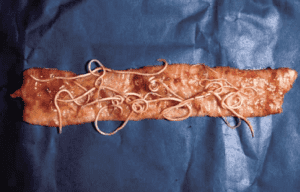
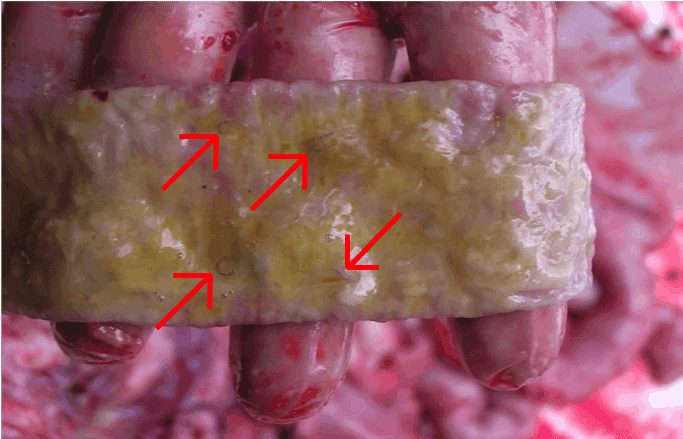

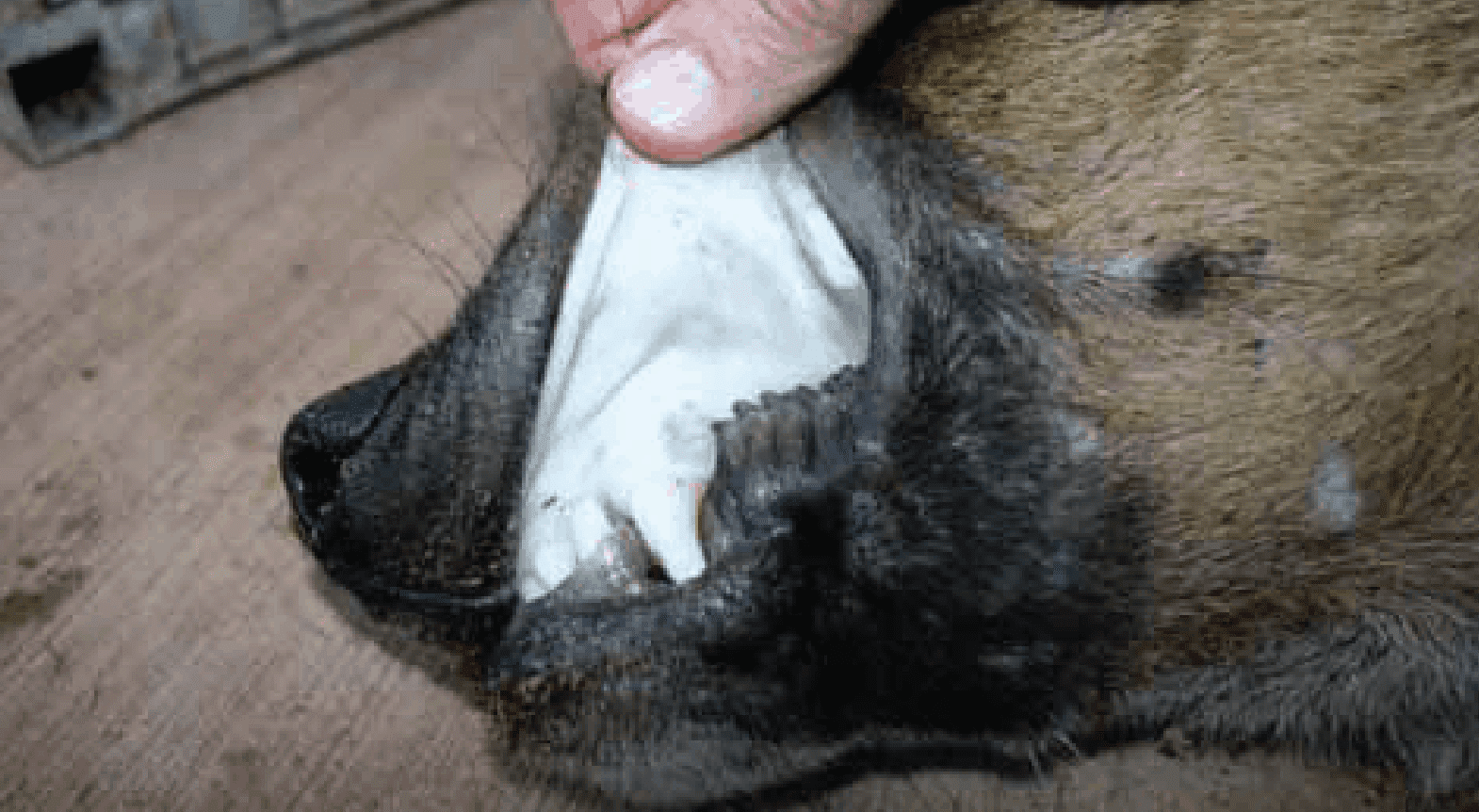
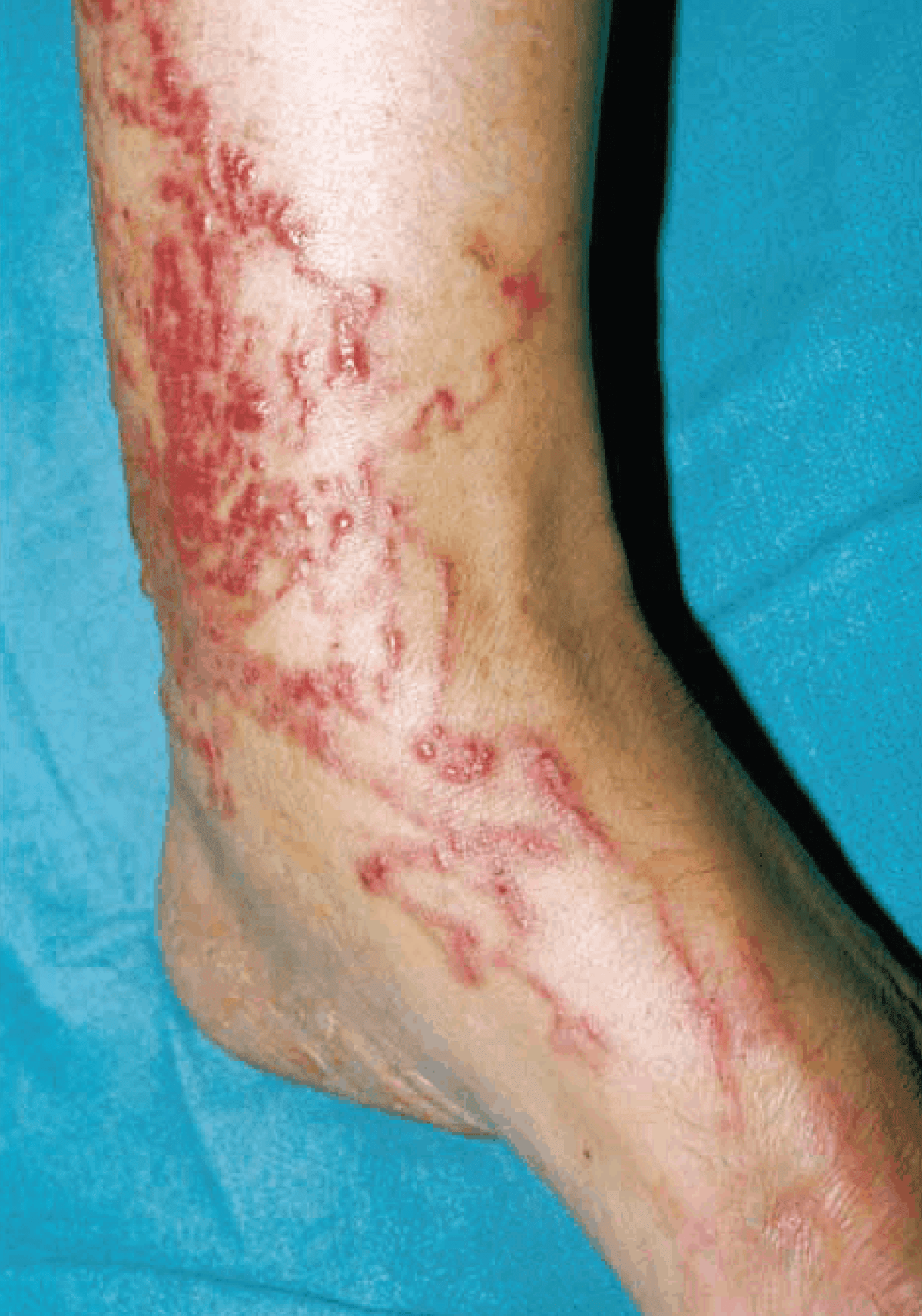
![The little white thing on this dog poo is a piece of tapeworm. Photo courtesy: The Monster Hunter’s Guide to Veterinary Parasitology, Copyright Lance Wheeler, www.veterinaryparasitology.com [Accessed 26th November 2019]}](https://www.amrric.org/wp-content/uploads/2019/12/flea-tapeworm-on-poo.jpg)
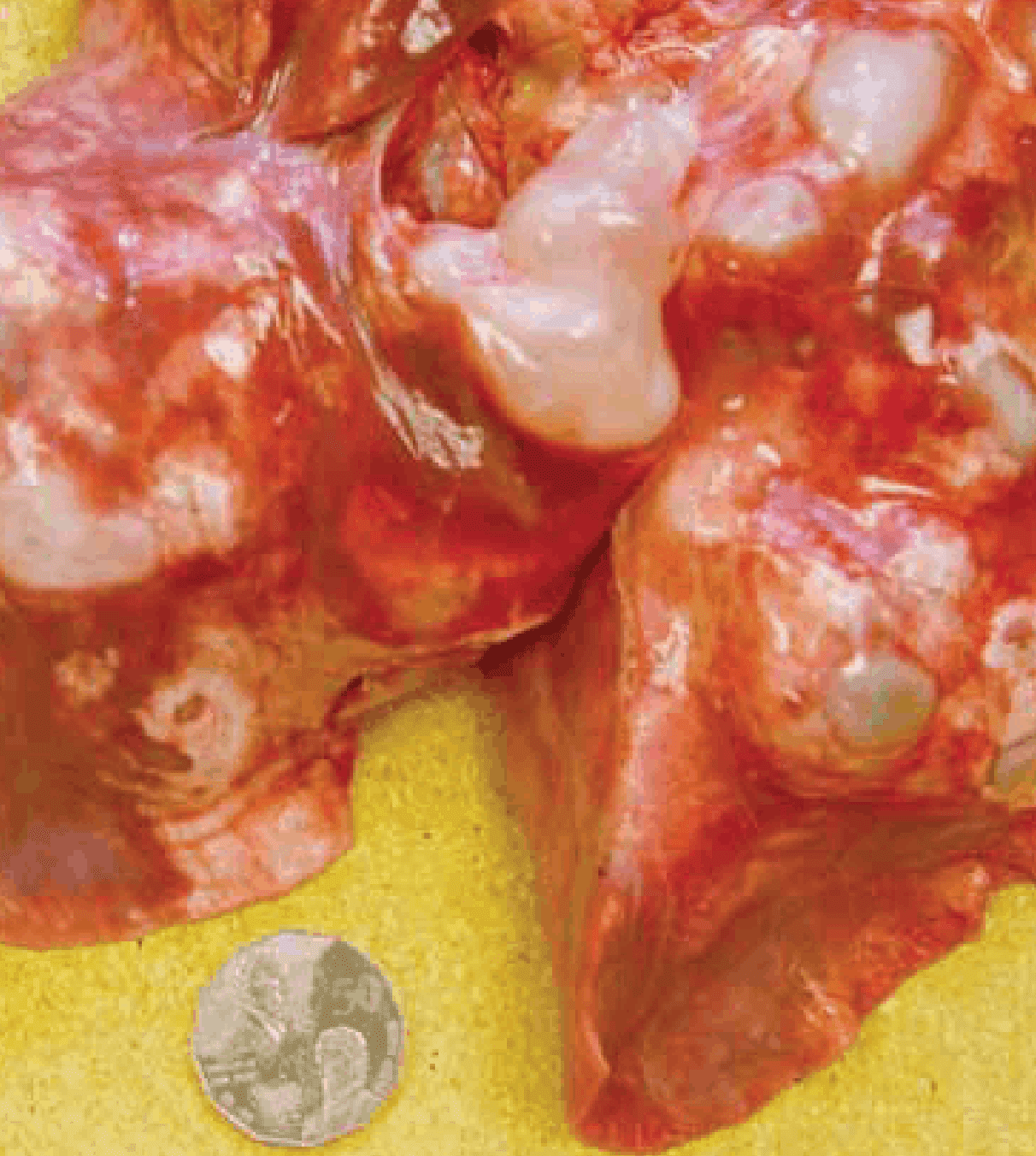
![Stronyloides stercoralis under a microscope. Photo courtesy: Blueiridium, https://commons.wikimedia.org/wiki/File:Strongyloides_species.jpg [Accessed 26th November 2019]](https://www.amrric.org/wp-content/uploads/2019/12/500px-Strongyloides_species.jpg)
